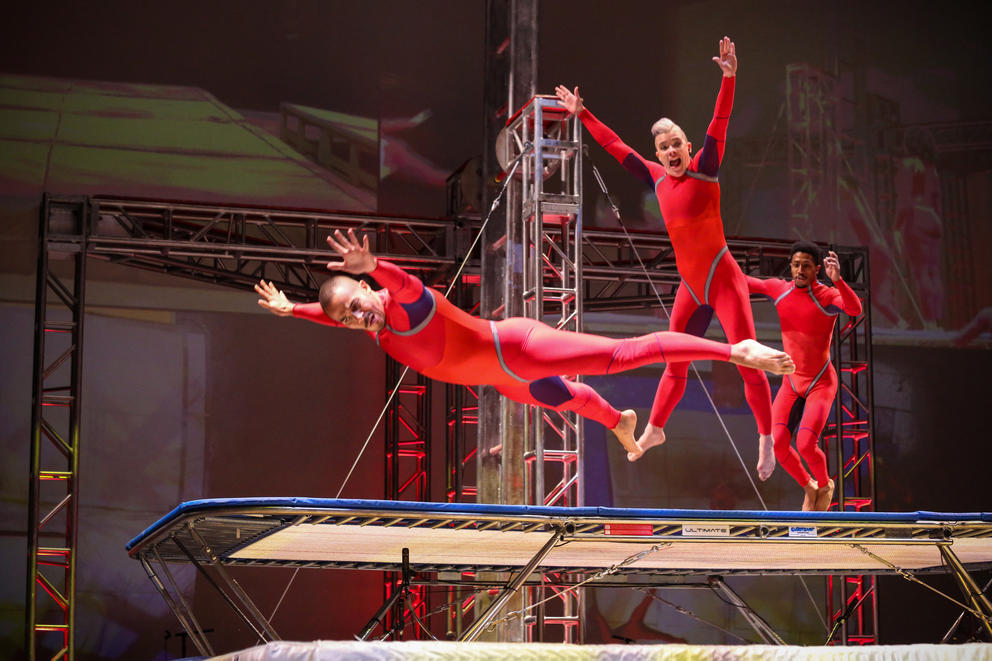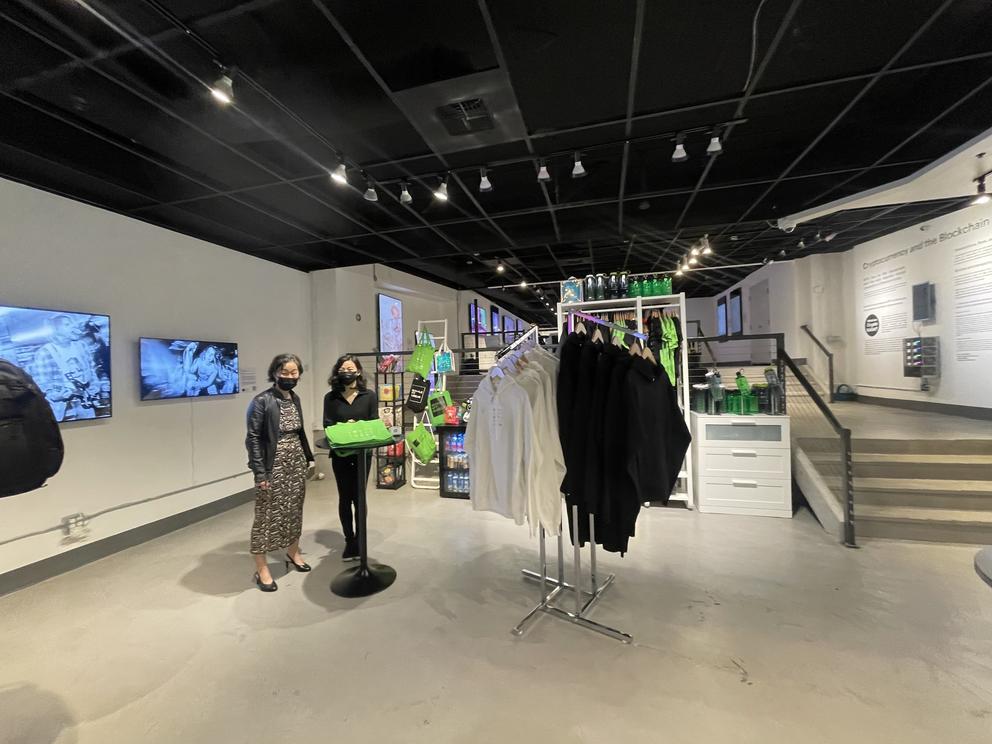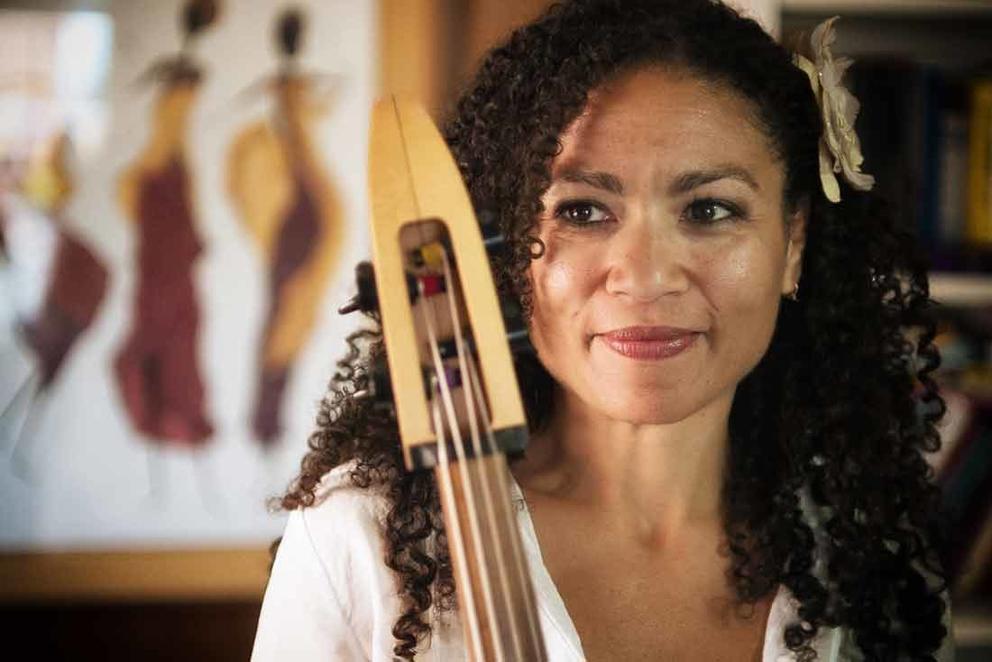The Brooklyn-based acrobatic dance group is touring Seattle for the first time in 15 years, bringing founder/choreographer Elizabeth Streb’s philosophy of falling to the Meany Center stage with the retrospective show Time Machine (Jan. 20-22).
ArtSEA: Notes on Northwest Culture is Crosscut’s weekly arts & culture newsletter.
Streb has been toying with Earth’s gravity since the 1970s, obsessed with discovering ways for the human body to fly — and equally important — how to land with minimal damage and get back up and do it again. It’s terrifying and thrilling to watch the performers (called “action heroes”) drop from scaffolding, leap off trampolines and fling themselves off a giant rolling wheel. There is no net, no superhero swooping in to the rescue. They just flat-out land like planks of wood. Swat. Streb says the point is to feel the gravitational forces and experience the electrified space between falling and landing.
“Once your ground is dragged out from under you, a world of wonder comes rushing in,” she says in a 2018 TED Talk. As we enter Year 3 of the rug being pulled out from under us in a room full of banana peels, it’s a reminder to stay alert to those flashes of wonder amid the freefall.
It also resonates with what we’ve seen again and again during the pandemic: People turn to art to get through times of crisis and to feel connected to our humanity. That might mean establishing a regular art-making practice (a la Seattle painter Barry Johnson’s daily portrait series) or just getting hooked on an excellent TV series.
I recently finished HBO Max’s post-apocalyptic Station 11, based on the book by Emily St. John Mandel, and was struck by the huge role art plays in rebuilding the devastated post-pandemic community. Without cellphones, internet or electricity, the scrappy survivors rely on a graphic novel, Shakespeare plays, creative costume design and music performance to find footing in a world that has fallen to pieces.
I was thinking about Station 11 this week, specifically the artistic resilience of the characters, as I read the results of ArtsFund’s newly released COVID Cultural Impact Study, which surveyed some 200 arts and cultural organizations in the state.
The short version: The impact was mighty, and not good. In the first year of the pandemic alone, responding organizations reported a loss of $95.9 million in overall revenue — and that’s after factoring in some $35.7 million in contributed revenue via pandemic relief funding, private donations and grants. Cultural organizations said full recovery could take years (even without the wild card of possible future variants) and, meanwhile, relief dollars are starting to dry up.
“The industry has been actively supporting our communities by offering healthy outlets to process the trauma, isolation and loss that so many of us experienced throughout the crisis,” the study authors wrote in the findings, noting the sector’s innovation and fortitude in the face of daunting odds. “We are in a moment of crisis. At the same time, we are in a moment of opportunity. The cultural sector will play a critical role in community recovery (economic and social), and there is a role for all of us to play in supporting the sector.”
Some argue arts recovery will involve NFT technology — and the potential revenue it might generate for artists. (If you’re still mystified by what NFTs are, the pros, cons and controversies, check out Crosscut reporter Margo Vansynghel’s NFT primer.) Last week, Margo attended a preview of the Seattle NFT Museum in Belltown (opening Jan. 27), where she noticed the first thing a visitor encounters is the gift shop. So before entering the main exhibit rooms, you can pick up a museum-branded T-shirt, water bottle, tote bag or teddy bear — but for these, she added, you’ll have to pay in good old U.S. dollars, rather than cryptocurrency.
It might seem like a disconnect to build a brick-and-mortar museum for a phenomenon based entirely on the internet (even if it looks like a sales room for high-def TVs). But the website says the physical location is “designed to bring together artists, creators, collectors and the broader blockchain community.” Whether you’re all-in on NFTs or just curious, the inaugural exhibit includes a dreamy pastel diner video piece by local artist Neon Saltwater, as well as a couple vintage black-and-white photos by Seattle concert photographer Charles Peterson, in which Kurt Cobain and Chris Cornell rock out from long ago stages into this new world.
For those looking to engage with art outside the blockchain community, you have plenty of options this weekend:
• In the live performance Cello in Connection, superb Seattle cellist Gretchen Yanover will showcase music created during her recent stint as Town Hall’s artist in residence. She’ll play transfixing electronic cello pieces, as well as compositions for string trio alongside guest musicians Anna Doak, Brendan Vance and Ben Thomas (Town Hall Seattle, Jan. 21, 7:30 p.m.; also livestreamed).
• After an impressive run of pandemic-induced dance films, Seattle’s Whim W’Him kicks off 2022 with a slate of live performances, featuring new works by Ethan Colangelo, Jakevis Thomason and Olivier Wevers (Jan. 21-29 at Cornish Playhouse, Jan. 26 at Vashon Center for the Arts, Jan. 27 at Whidbey Center for the Arts).
• And at Woodside Braseth Gallery, longtime Seattle artist Susan Bennerstrom — who won a 2020 SOLA award from Artist Trust — presents a new series of paintings called Inside Out (through Feb. 13). Inspired by a trip to Morocco she completed just before the pandemic hit, Bennerstrom says she found herself suddenly in solitude, seeking out the light in every room she painted. The result is a quiet comfort, a meditation on the hope sparked by a simple shaft of sun.
Get the latest in local arts and culture
This weekly newsletter brings arts news and cultural events straight to your inbox.




